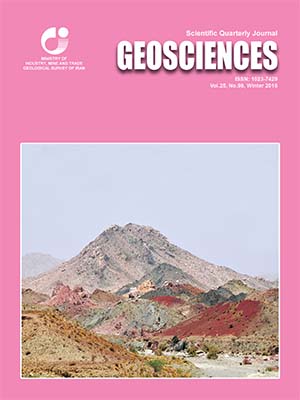Document Type : Original Research Paper
Authors
1 Ph. D. Student, Department of Geology, Islamic Azad University North Tehran Branch, Theran, Iran
2 Associate Professor, Department of Geology, Islamic Azad University North Tehran Branch; Research Institute for Earth Sciences, Geological Survey of Iran, Theran, Iran
3 Assistant Professor, Research Institute for Earth Sciences, Geological Survey of Iran, Theran, Iran
4 M. Sc., Geological Survey of Iran, Theran, Iran
5 Professor, Department of Geology, Islamic Azad University North Tehran Branch, Theran, Iran
Abstract
The north-south trending Astara Fault System (AFS) is located in the east of Talesh Mountains (TM) and west of the Caspian Sea. The probable seismic activity of this fault system will largely affect the north of GilanProvince. The AFS is one of the basement faults in Iran, which plays an important role in TaleshMountains region and subsidence of the South Caspian Basin (SCB). It seems that the AFS is the source of moderate to large magnitude instrumental earthquakes such as the 16-4-1913 (Magnitude=5.1), 11-7-1970 (Magnitude Mb=5.2), 4-11-1978 (Magnitude Ms=6.0) earthquakes.However, little is known about historical earthquakes related to the AFS, but it has been probably the source of the 1709AD and 1713AD historical earthquakes in Rasht. In spite of the earthquakes attributed to the AFS, the lack of critical seismic information such as recurrence interval, slip rate and activity rate of the AFS has made its future seismic activity ambiguous. This research aims at assessing the earthquake recurrence interval related to the AFS. Therefore, two different methods, i.e. Gutenberg–Richter and Kijko–Sellovelmethods,were used to estimate the recurrence interval. The results obtained from the Gutenberg–Richter method represent anearthquake of Ms>8 to occur in the interval of 500, 1000 and 2000 years. The results of the Kijko–Sellovel method, however, representearthquakes with the magnitudes of Ms =7.3, Ms =7.7 andMs =7.9 to occur in the interval of 500, 1000 and 2000 years, respectively.
Keywords

